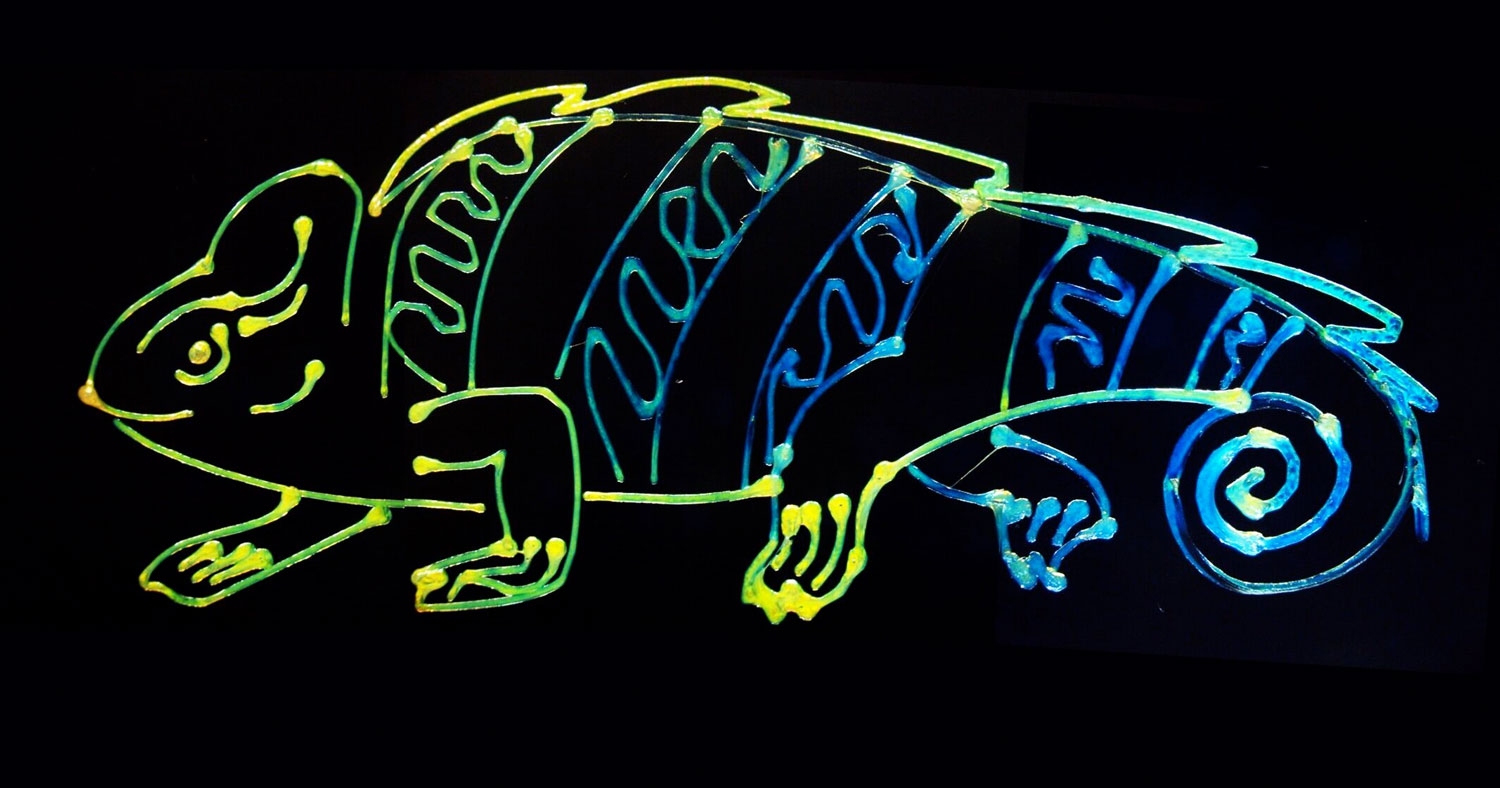Inspired by the ability of chameleons to change color, researchers at the University of Illinois Urbana-Champaign have developed a sustainable technique to 3D print multiple, dynamic colors with a single ink.
The UV-assisted direct writing technique for 3D printing, developed by Ying Diao, associate professor of chemistry and chemical and biomolecular engineering, and her team, allows the structural color to change by adjusting the light. This method controls the evaporation-induced assembly of specially designed crosslinking polymers.
“By designing new chemistries and printing processes, we can modulate structural color on the fly to produce color gradients not possible before,” said Ying Diao, an associate professor of chemistry and chemical and biomolecular engineering at the University of Illinois Urbana-Champaign and a researcher at the Beckman Institute for Advanced Science and Technology.
“This work is a great illustration of the power of collaboration,” said co-author Damien Guironnet, an associate professor of chemical and biomolecular engineering.
“Unlike traditional colors which come from chemical pigments or dyes that absorb light, the structural colors abundant in many biological systems come from nano-textured surfaces that interfere with visible light. This makes them more vibrant and potentially more sustainable,” said Sanghyun Jeon, the lead author and a graduate student in the Diao Lab.
The researchers are able to create structural colors in the visible wavelength range from deep blue to orange.
“The work shows the benefit of us all having learned from each other by sharing our successes and challenges,” said co-author Simon Rogers, an associate professor of chemical and biomolecular engineering.
“Only by working together could we design this system at the molecular level to yield such fascinating properties,” said co-author Charles Sing, an associate professor of chemical and biomolecular engineering and materials science and engineering.
This discovery promises not only an advance in color design and application in 3D printing, but also a step toward more sustainable production of colored materials.
Subscribe to our Newsletter
3DPresso is a weekly newsletter that links to the most exciting global stories from the 3D printing and additive manufacturing industry.





















